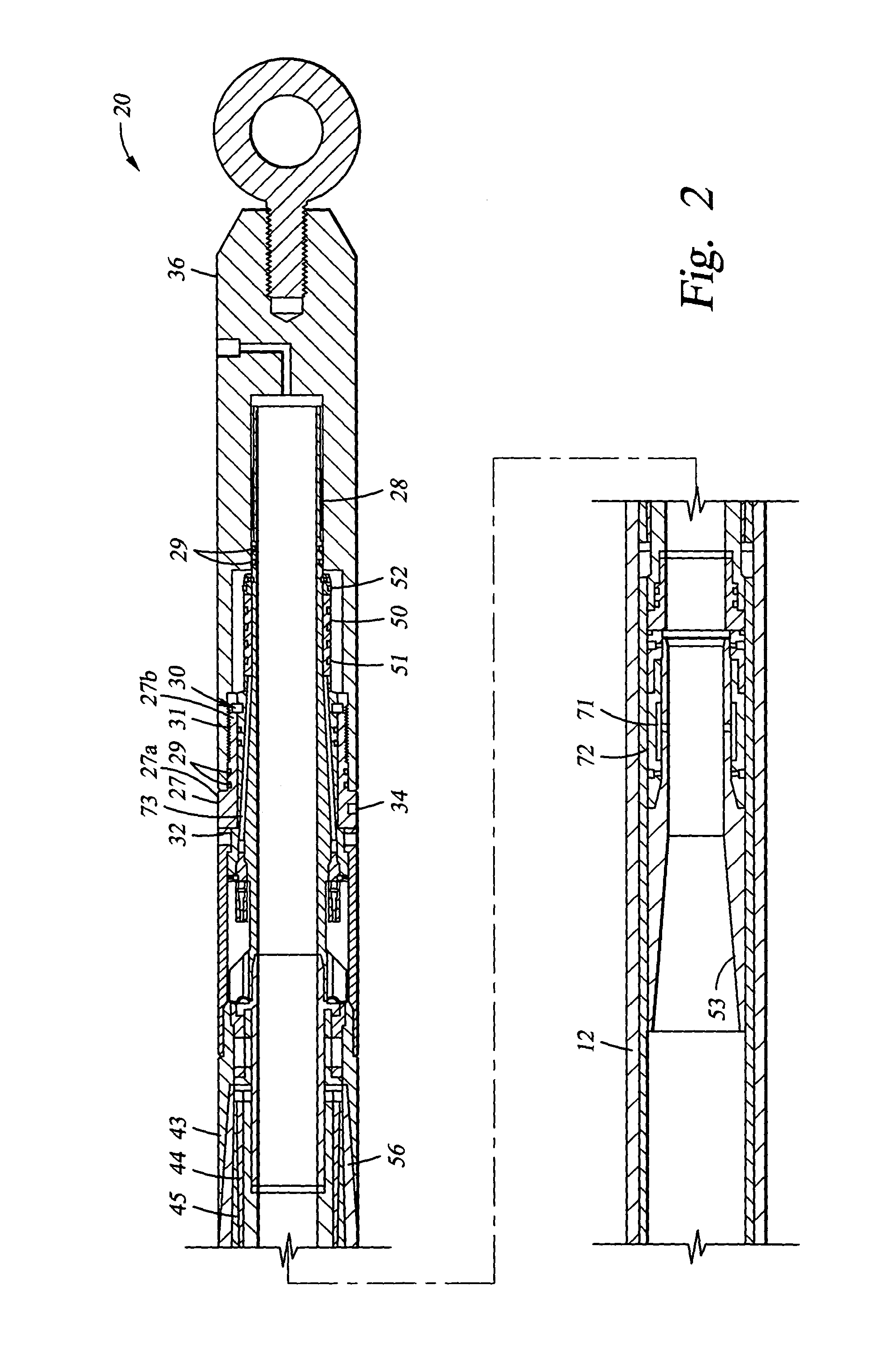Spoolable composite coiled tubing connector
- Summary
- Abstract
- Description
- Claims
- Application Information
AI Technical Summary
Benefits of technology
Problems solved by technology
Method used
Image
Examples
Embodiment Construction
[0035]The preferred embodiments of the connector provide methods and apparatus for connecting two lengths of composite coiled tubing with a connector that can be spooled with the tubing onto a reel and that will pass through an injector. Embodiments of the connector include female and male housings, each of which is connected to a length of composite coiled tubing. The housings are joined together to create the coiled tubing connection and provide mechanical and electrical or fiber optic connectivity between the two lengths of tubing. A connecting member on the male housing includes engages the female housing to connect the two housings. The housings may be aligned by splines on the male housing which align with corresponding flutes on the female housing. The female and male housings are each attached to end portions of the lengths of composite coiled tubing by a clamped connection. The connector has a length which allows it to be spoolable onto a reel with the composite coiled tubi...
PUM
 Login to View More
Login to View More Abstract
Description
Claims
Application Information
 Login to View More
Login to View More - R&D
- Intellectual Property
- Life Sciences
- Materials
- Tech Scout
- Unparalleled Data Quality
- Higher Quality Content
- 60% Fewer Hallucinations
Browse by: Latest US Patents, China's latest patents, Technical Efficacy Thesaurus, Application Domain, Technology Topic, Popular Technical Reports.
© 2025 PatSnap. All rights reserved.Legal|Privacy policy|Modern Slavery Act Transparency Statement|Sitemap|About US| Contact US: help@patsnap.com



